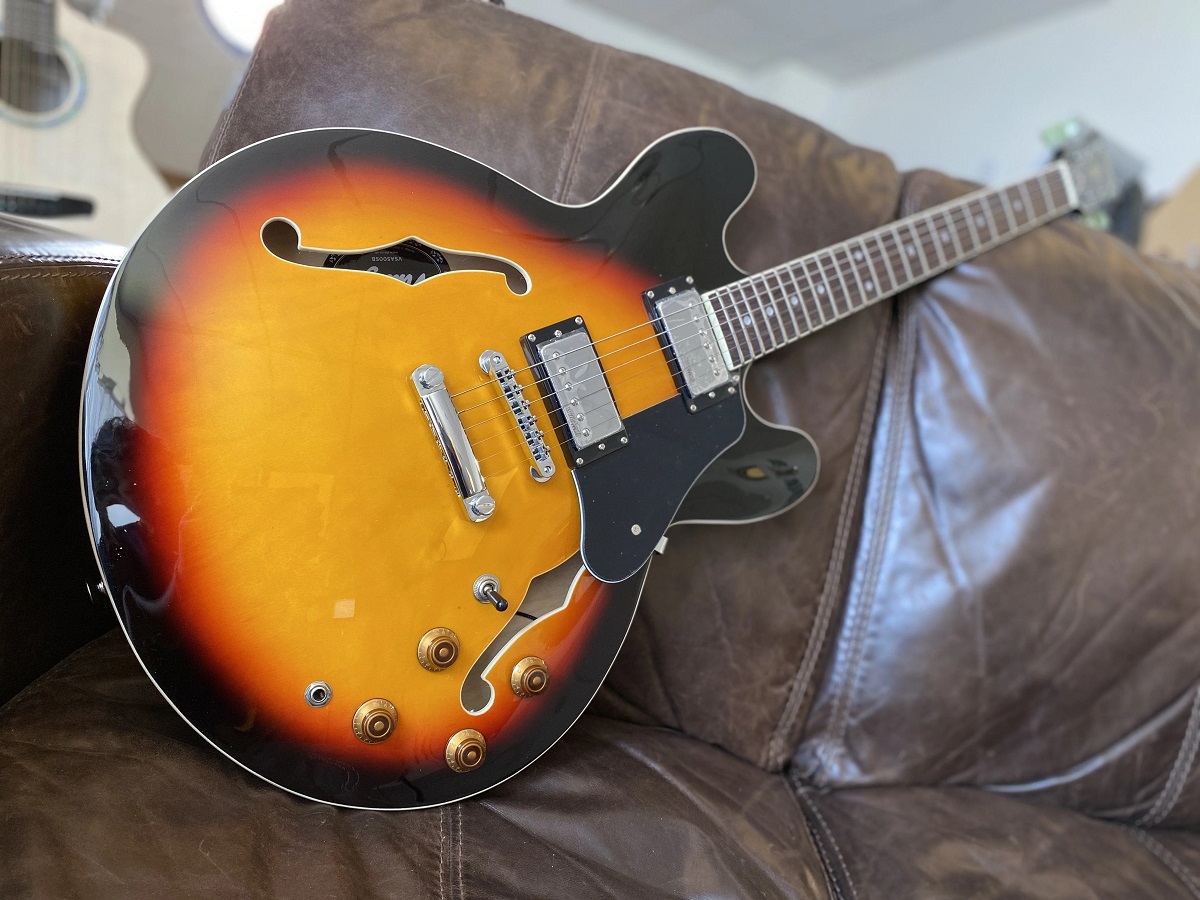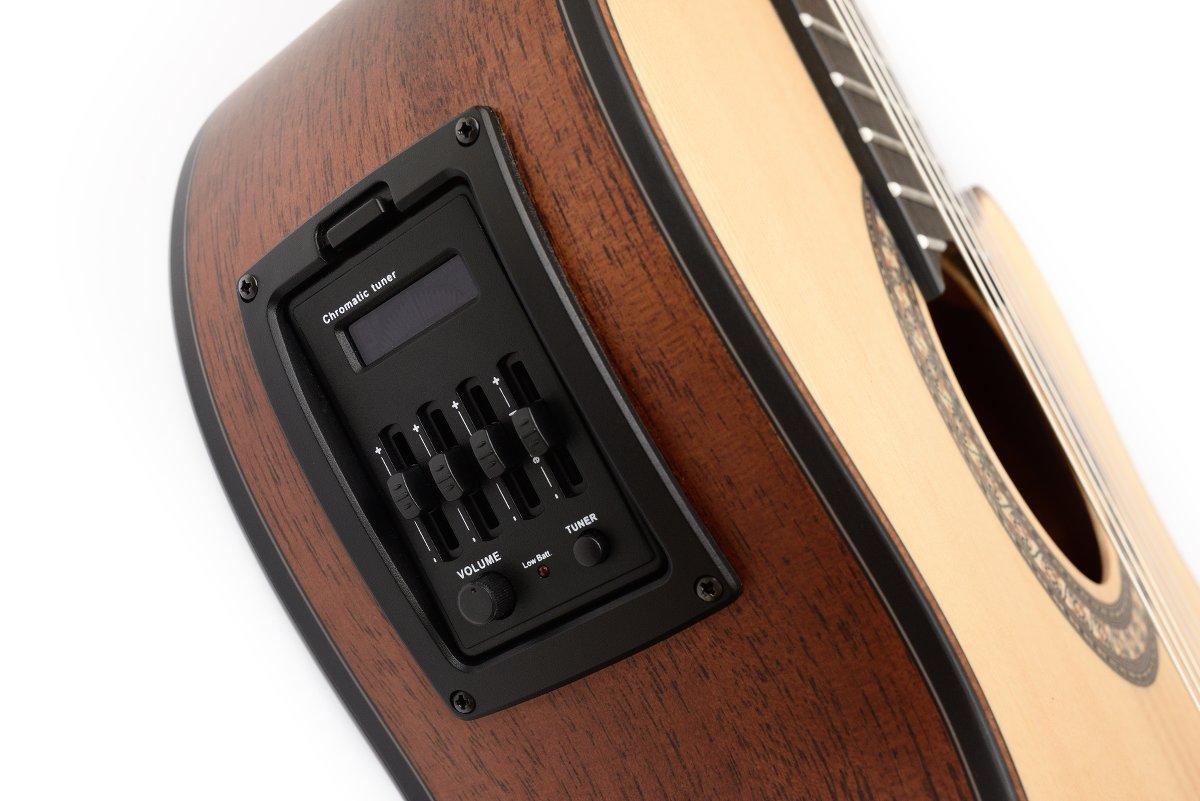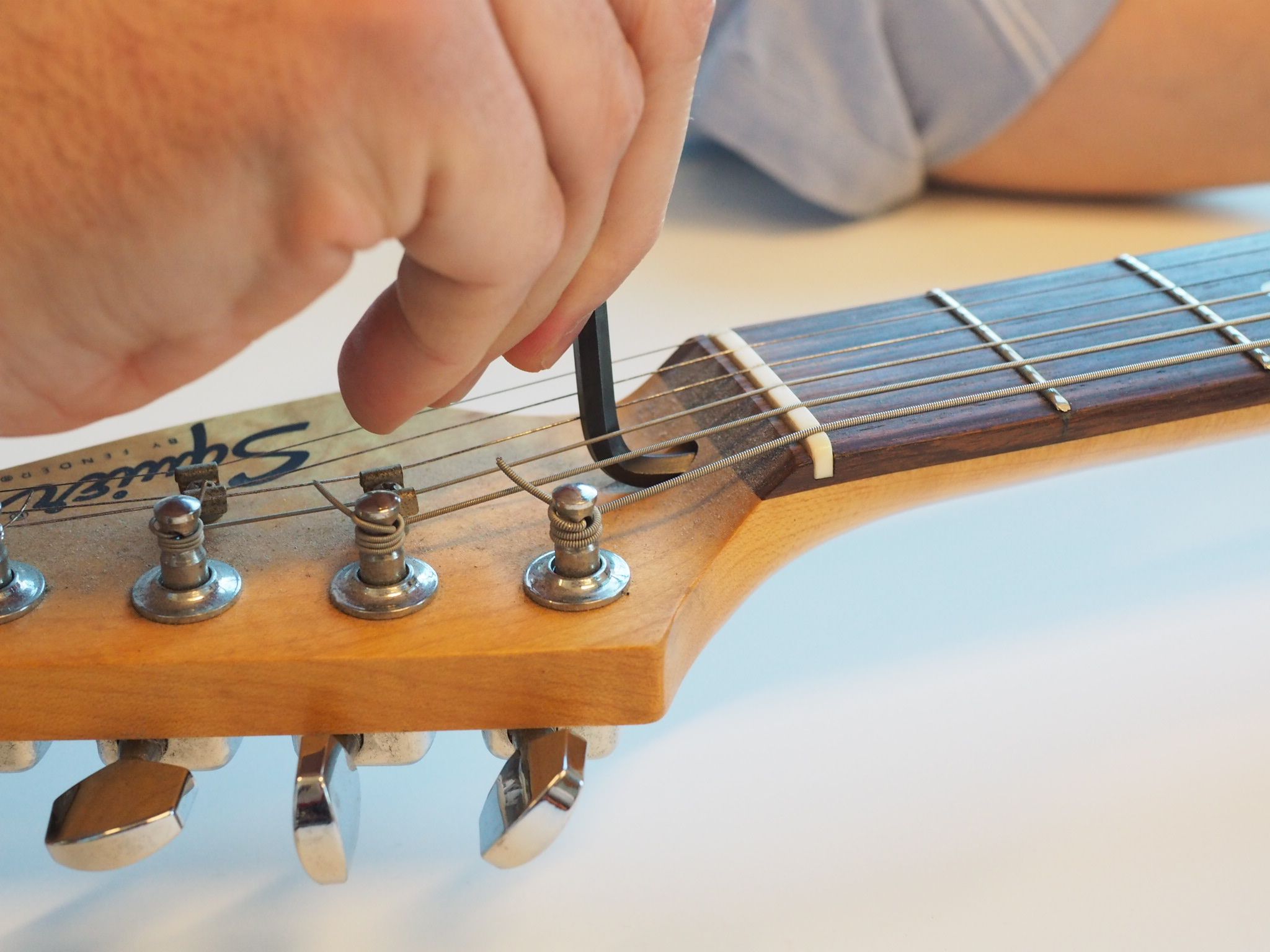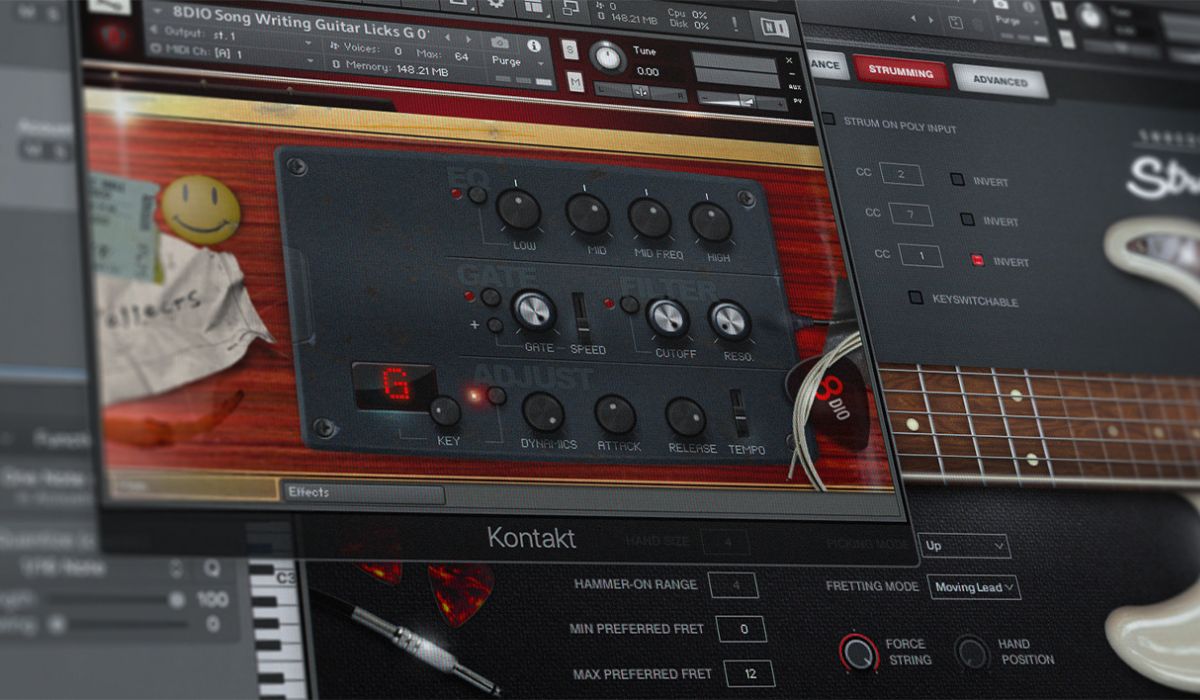Introduction
When it comes to playing the electric guitar, one of the fundamental aspects to consider is the size of the instrument. The size of a full-size electric guitar plays a crucial role in determining the comfort and playability for the guitarist. Understanding the dimensions and variations in full-size electric guitars is essential for both beginners and experienced players who are looking to invest in a new instrument.
In this comprehensive guide, we will delve into the standard dimensions of a full-size electric guitar, explore the variations in sizes, and discuss the factors that should be taken into account when choosing the right instrument. Whether you are a budding musician or a seasoned player, having a clear understanding of the size of a full-size electric guitar is paramount in making an informed decision and ensuring an enjoyable playing experience.
Throughout this article, we will shed light on the intricate details of full-size electric guitars, providing valuable insights to help you navigate the diverse options available in the market. By the end of this guide, you will have a deeper understanding of the size considerations for full-size electric guitars, empowering you to make a well-informed choice that aligns with your playing style and preferences. So, let's embark on this enlightening journey to unravel the mysteries surrounding the size of a full-size electric guitar.
Standard Full-Size Electric Guitar Dimensions
Full-size electric guitars typically adhere to standard dimensions, ensuring consistency in their physical attributes. The most common length of a full-size electric guitar ranges from 39 to 41 inches, with a scale length of about 25.5 inches. The scale length refers to the vibrating length of the strings from the nut to the bridge, directly impacting the playability and tonal characteristics of the instrument.
Furthermore, the body width of a standard full-size electric guitar typically spans around 12 to 13.5 inches, providing ample space for comfortable playing and maneuverability. The depth of the body varies between 1.5 to 2.75 inches, contributing to the overall resonance and tonal properties of the guitar.
Moreover, the neck width at the nut, where the headstock meets the fretboard, is generally around 1.625 inches, offering a balanced grip for fretting and chord transitions. The number of frets on a standard full-size electric guitar typically ranges from 21 to 24, allowing for extended range and versatility in playing various musical styles.
Additionally, the weight of a full-size electric guitar usually falls between 6 to 12 pounds, depending on the materials used in its construction. This weight range ensures that the instrument remains comfortably manageable during prolonged playing sessions while offering stability and resonance.
Understanding these standard dimensions is crucial for players seeking a full-size electric guitar that aligns with their physical comfort and playing preferences. These dimensions serve as a benchmark for evaluating the ergonomics and sonic capabilities of different models, enabling players to make an informed decision based on their specific needs and playing style.
Variations in Full-Size Electric Guitar Sizes
While full-size electric guitars adhere to standard dimensions, there are notable variations in sizes that cater to diverse playing styles and player preferences. One common variation is the body shape, which can range from the traditional double-cutaway design to more unconventional and ergonomic forms. These variations in body shapes not only contribute to the aesthetic appeal of the guitar but also impact the accessibility of higher frets and the overall comfort during extended playing sessions.
Scale length is another aspect that exhibits variations, with some full-size electric guitars featuring shorter scale lengths, typically around 24 inches, for easier fretting and a warmer tonal character. On the other hand, extended-range guitars may incorporate longer scale lengths, reaching up to 27 inches, to accommodate additional strings and lower tunings, catering to the needs of metal, progressive, and experimental guitarists.
Furthermore, the width and profile of the neck exhibit notable variations, ranging from slim, fast-playing necks to thicker, more substantial profiles, offering diverse tactile experiences for players with different hand sizes and playing techniques. Neck profiles also contribute to the overall feel and stability of the instrument, influencing the ease of fretting and bending notes.
Body thickness is an area of significant variation, with some full-size electric guitars featuring thinner, contoured bodies for enhanced comfort and reduced weight, while others boast thicker, solid-body constructions for maximum sustain and resonance. These variations in body thickness cater to different sonic preferences and playing scenarios, allowing players to choose a guitar that complements their musical expression.
Understanding these variations in full-size electric guitar sizes empowers players to explore a wide spectrum of options that align with their unique playing preferences and musical aspirations. By considering these variations, players can discover a full-size electric guitar that not only meets their physical comfort requirements but also resonates with their artistic vision, ultimately enriching their musical journey.
Factors to Consider When Choosing a Full-Size Electric Guitar
When embarking on the journey of selecting a full-size electric guitar, several crucial factors warrant careful consideration to ensure that the chosen instrument harmonizes with the player’s individual needs and preferences. One pivotal factor is the playing style and genre preferences of the guitarist. Different musical genres demand distinct tonal characteristics and playability, and selecting a guitar that complements the intended style can significantly enhance the player’s musical expression.
Moreover, the construction materials of the guitar play a pivotal role in shaping its tonal properties and overall resonance. Factors such as the wood type used for the body, neck, and fretboard, as well as the hardware components, significantly influence the instrument’s sonic characteristics. Understanding the sonic attributes associated with various construction materials empowers players to make informed decisions based on their tonal preferences.
Another vital consideration is the ergonomics and comfort of the instrument. Players should assess the body shape, weight, and neck profile to ensure that the guitar feels comfortable and facilitates unrestricted playability. Additionally, the accessibility of higher frets and the balance of the instrument are essential ergonomic factors that contribute to a seamless playing experience.
Furthermore, the scale length and string gauge of the guitar directly impact the tension, feel, and tonal response of the instrument. Players should consider these factors in relation to their playing technique and preferred string feel, as they greatly influence the overall playability and responsiveness of the guitar.
Additionally, the hardware and electronics of the guitar, including the pickups, bridge, and tuning machines, are pivotal considerations that influence the instrument’s tonal versatility and tuning stability. Understanding the sonic characteristics and functional attributes of different hardware components empowers players to select a guitar that aligns with their tonal aspirations and performance requirements.
By carefully considering these factors, players can navigate the diverse landscape of full-size electric guitars with confidence, ensuring that the chosen instrument not only meets their technical and sonic prerequisites but also resonates with their artistic vision, ultimately enriching their musical journey.
Conclusion
Exploring the size considerations for full-size electric guitars unveils a rich tapestry of dimensions, variations, and factors that collectively shape the playing experience and sonic character of the instrument. By understanding the standard dimensions of full-size electric guitars, players gain valuable insights into the physical attributes that contribute to comfort, playability, and tonal response.
Moreover, delving into the variations in full-size electric guitar sizes illuminates the diverse options available to players, catering to a wide spectrum of playing styles, tonal preferences, and ergonomic requirements. These variations empower players to select a guitar that not only aligns with their physical comfort but also resonates with their artistic sensibilities, fostering a deeper connection between the musician and the instrument.
Furthermore, the factors to consider when choosing a full-size electric guitar underscore the multifaceted nature of the decision-making process, emphasizing the significance of playability, tonal characteristics, construction materials, and hardware components. By carefully evaluating these factors, players can make informed choices that elevate their musical expression and performance capabilities.
Ultimately, the size of a full-size electric guitar transcends mere physical dimensions, embodying a harmonious fusion of ergonomics, sonic artistry, and personal connection. As players embark on the quest for their ideal instrument, they are invited to embrace the nuanced interplay between size, sound, and soul, forging a profound bond with the full-size electric guitar that becomes an extension of their musical identity.
With a deeper understanding of the intricate dimensions, variations, and factors surrounding full-size electric guitars, players are poised to embark on a fulfilling musical journey, enriched by the harmonious resonance of a meticulously chosen instrument that amplifies their creative expression and artistic vision.

























